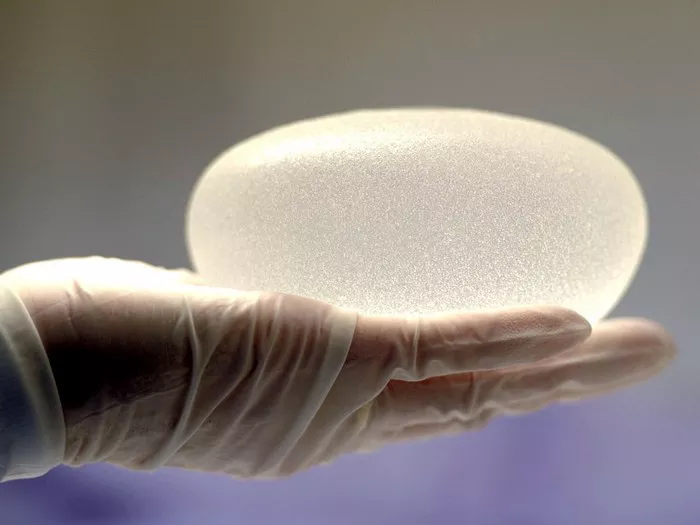Saline breast fillers have gained popularity as a non-surgical alternative to traditional breast augmentation procedures. This minimally invasive option involves injecting saline solution into the breasts to enhance their size and shape. While saline breast fillers offer advantages like shorter recovery times and smaller incisions, potential patients should be aware of the possible side effects and risks associated with this procedure. In this article, we will explore the use of saline breast fillers, the associated side effects, and what individuals considering this option should know.
Understanding Saline Breast Fillers
Saline breast fillers, also known as saline breast injections, are a non-surgical method of breast augmentation. Unlike traditional breast augmentation surgery, which involves the placement of silicone or saline implants through incisions, saline breast fillers are administered through small injections directly into the breasts. The filler used in this procedure is typically a sterile saline solution, which is a mixture of salt and water.
Key Aspects of Saline Breast Fillers
Minimally Invasive: Saline breast fillers do not require major incisions or surgical implant placement. This is appealing to individuals seeking breast enhancement without significant scarring.
Adjustable: One of the advantages of saline breast fillers is that the volume can be adjusted during the procedure. This allows for a more precise and customizable outcome.
Temporary Results: The results of saline breast fillers are not permanent. Over time, the body gradually absorbs the saline solution, and additional injections may be needed to maintain the desired breast size and shape.
Shorter Recovery: Compared to traditional breast augmentation surgery, the recovery period for saline breast fillers is typically shorter, with less downtime.
Potential Side Effects of Saline Breast Fillers
While saline breast fillers offer an appealing non-surgical option for breast augmentation, they are not without potential side effects and risks. Individuals considering this procedure should be informed about these factors and consult with a qualified healthcare provider before making a decision. Here are some potential side effects associated with saline breast fillers:
Pain and Discomfort: Patients may experience pain, discomfort, or mild swelling at the injection sites immediately after the procedure. This is typically temporary and can be managed with over-the-counter pain relievers.
Bruising and Swelling: Some degree of bruising and swelling is common after saline breast filler injections. These effects usually subside within a few days to a week.
Infection: Although rare, there is a risk of infection at the injection sites. To minimize this risk, it’s essential to choose a qualified and experienced healthcare provider and follow proper aftercare instructions.
Asymmetry: Achieving perfect symmetry with saline breast fillers can be challenging. Minor differences in breast size and shape may occur, although they are generally less noticeable than with surgical implants.
Rupture or Leakage: Unlike silicone or saline implants, which can rupture or leak, saline breast fillers are not associated with this risk. However, if an injection site were to leak or rupture, it could lead to a deflation of the affected breast.
Migration: There is a potential for saline solution to migrate within the breast tissue, causing uneven distribution. This can affect the appearance of the breasts and may require adjustments.
Visibility and Palpability: In some cases, the saline solution may be visible or palpable beneath the skin, particularly in individuals with thin breast tissue. This can result in an unnatural appearance or feel.
Scarring: While the incisions made for saline breast fillers are small, they can still lead to minor scarring. Proper wound care can help minimize scarring.
Allergic Reactions: Allergic reactions to saline solution are extremely rare but not impossible. It’s essential to discuss any known allergies with the healthcare provider before the procedure.
Unpredictable Results: The absorption rate of saline solution can vary from person to person, making it challenging to predict how long the results will last. Additional injections may be necessary to maintain the desired appearance.
Consultation and Safety
Before undergoing saline breast filler injections, it is crucial to schedule a consultation with a qualified and experienced healthcare provider. During the consultation, the provider will assess your medical history, discuss your goals and expectations, and determine if you are a suitable candidate for the procedure. They will also explain the potential side effects and risks associated with saline breast fillers.
It’s essential to choose a reputable provider who is skilled in administering saline breast fillers and who operates in a safe and sterile environment. Ask for before-and-after photos of previous patients to get an idea of the provider’s work.
Conclusion
Saline breast fillers offer a non-surgical option for individuals seeking breast augmentation. While this procedure can provide desirable results with a shorter recovery period compared to traditional breast augmentation surgery, it is essential to be aware of the potential side effects and risks involved. Patients should consult with a qualified healthcare provider to discuss their goals, expectations, and any concerns before making a decision about saline breast fillers. Choosing a skilled provider and following proper aftercare instructions can help minimize the likelihood of adverse effects and contribute to a successful outcome.


